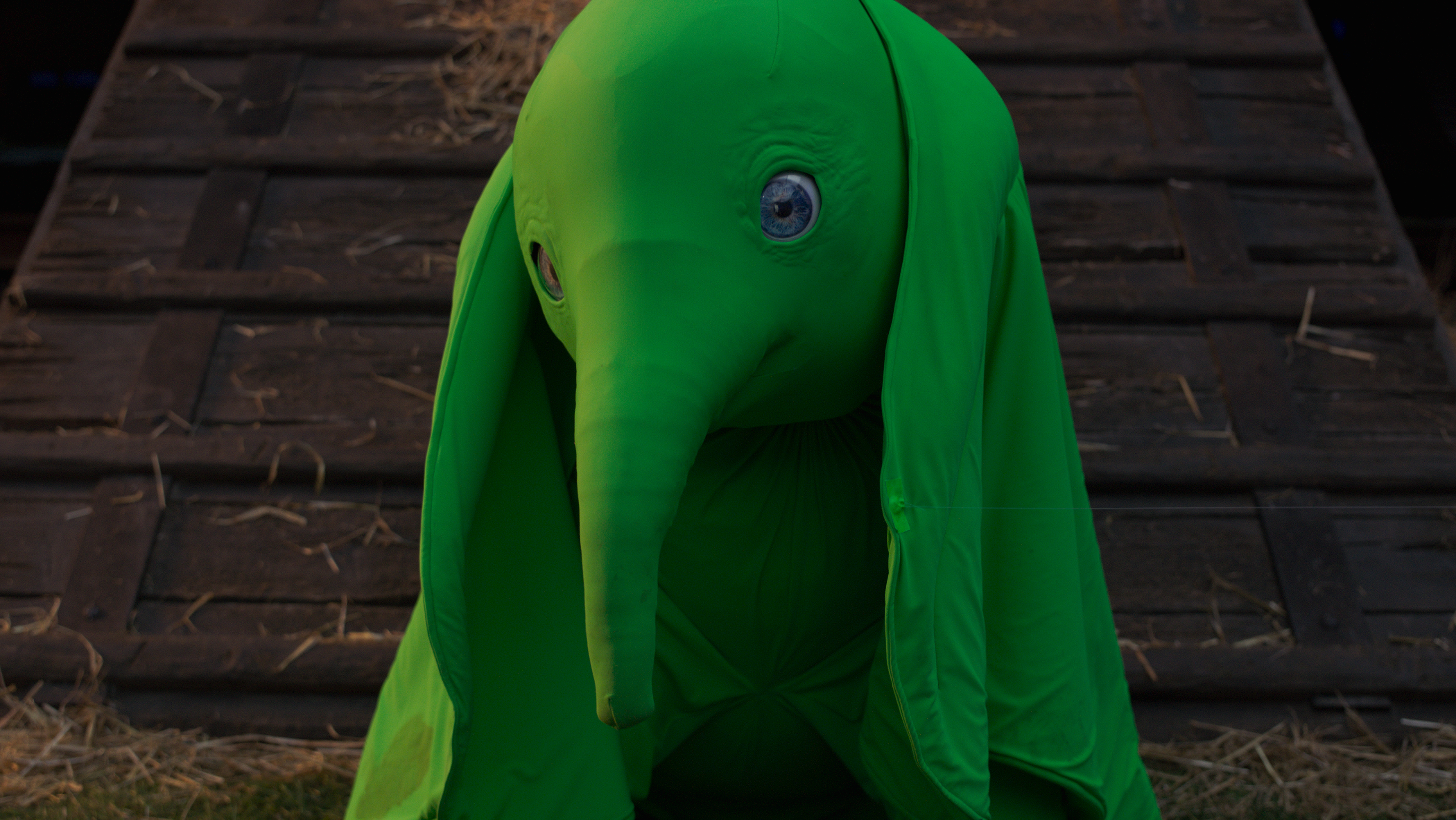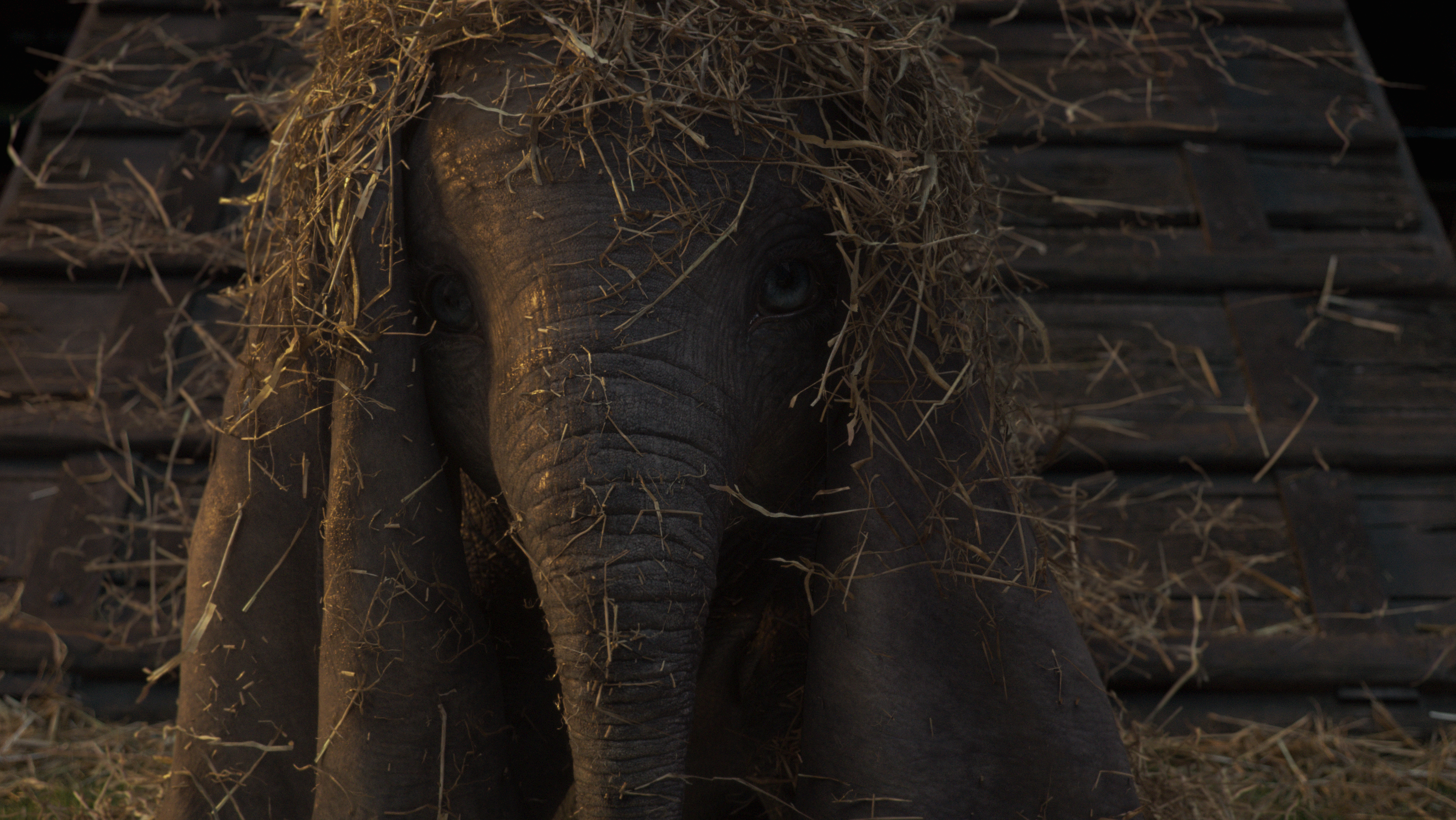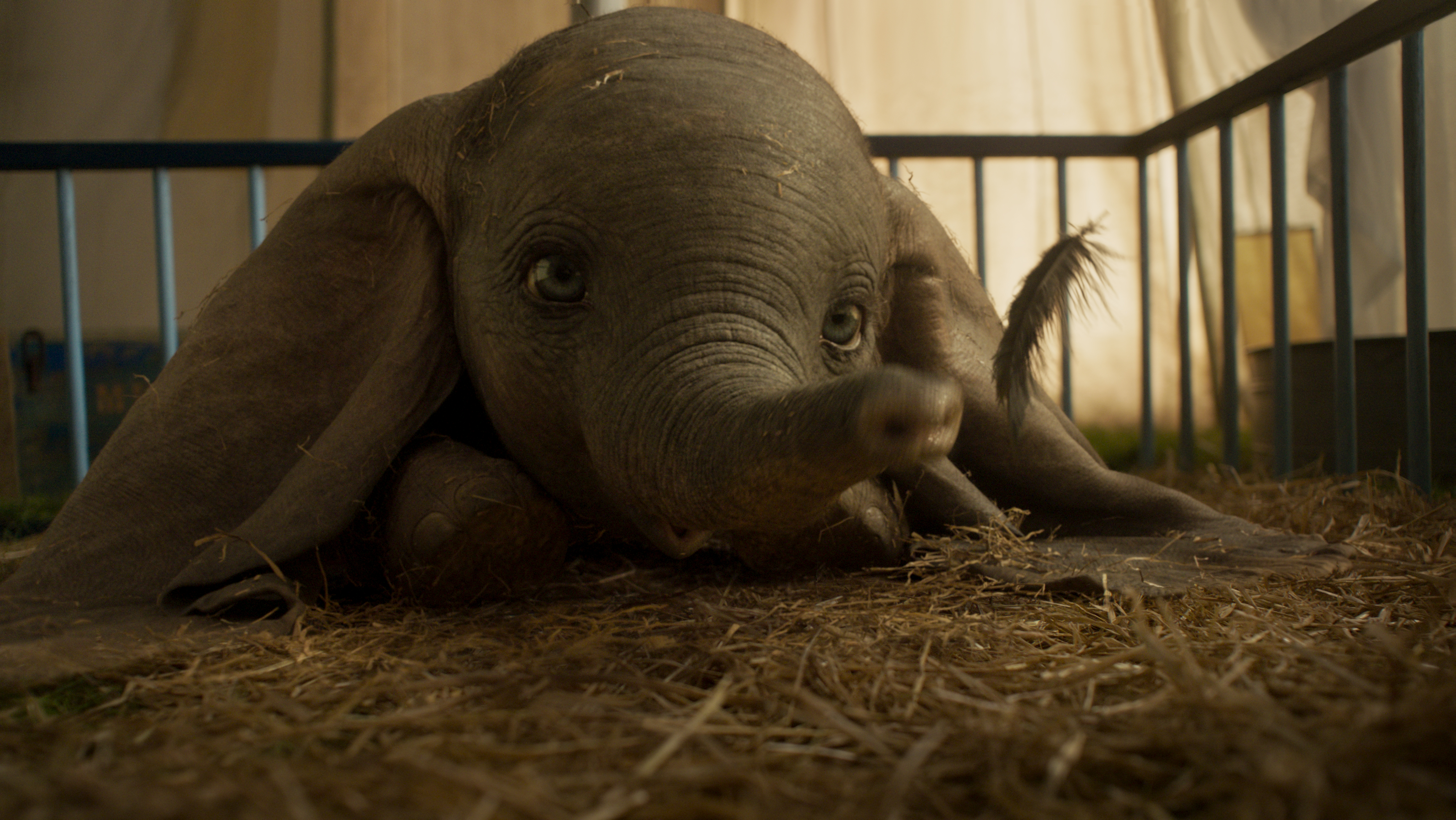One of the first times we meet Dumbo, the titular character in Tim Burton’s recent live action reimagining of the classic 1941 animated feature, he is covered in hay and straw. The natural debris serves to slowly reveal the incredibly cute baby elephant to both audience and the other characters in the film, and MPC’s effects simulations for the straw - on top of its CG Dumbo - were a crucial part in making that reveal possible.
Watch the reveal scene from Dumbo.
An Overview of the Effects Sims
Artists from around the world at MPC’s different studios worked on the shots. The models and textures of the straw strands were completed by MPC Bangalore, with artists there modeling 10 different types of straw and fluff - five big long straw strands with simple shapes and five more complex shapes but smaller fluff - in Maya. Animation of Dumbo was handled by MPC London, also in Maya. All of the straw simulations and static straw scattered on Dumbo were then created in Houdini by MPC Montreal. Lighting was carried out in Katana and RenderMan by MPC Montreal, and compositing done by in MPC Montreal using NUKE.
MPC FX lead Sebastien Terme in Montreal oversaw the Houdini straw effects sims. “For that reveal shot,” he says, “I gathered the animated model of Dumbo made by MPC London and the camera. The first step was to launch a general simulation of the Dumbo character without friction to have a first pass at creating the straw. With this simulation, all the strands fall around Dumbo and give a natural feeling of a carpet made of straw on the ground.”
For that reveal shot I gathered the animated model of Dumbo made by MPC London and the camera. The first step was to launch a general simulation of the Dumbo character without friction to have a first pass at creating the straw. With this simulation, all the strands fall around Dumbo and give a natural feeling of a carpet made of straw on the ground.
Sebastien Terme | MPC FX LeadAll of the straw simulations were simple wire simulations on a basic poly line shape for each strand. A sphere made up of points was the base of Terme’s setup. Each point had an attribute ID, and then a ‘for each’ connected to the points. Terme says that this technique proved to be a fast one, and it also allowed individual strands of straw to be removed as required.
“Each point was replaced by straw,” further explains Terme. “For each point I created a poly line representation of the strands. In a second pass I created another high resolution model of the straw for each of the same points.”
“The simulation was done using the low resolution model of the straw,” adds Terme. “After that, when the wire simulation of the poly line was completed, I wrapped the high resolution model to the low resolution poly line model using a PointDeform node in a third ‘for each’ loop.”
At the same time, Terme also built a setup for static strands of straw, which stuck to the elephant without simulation. “It was just a scatter of straw strands based on the shape of the model, and I selected all of the strands inside the model and pushed it outside of the skin with a simple VDB system. The model of Dumbo was transformed to VDB for the collision of the strands.”
In the final reveal scene, only a few real pieces of straw were there in the frame on the grass and ramp behind Dumbo; in fact, less than 10 real straw strands from the original plate remain in the shot.

Dumbo is seen amongst straw in several other shots in the film
Straw: An Epic Project
Straw was always on the mind of FX department at MPC Montreal, which, says Terme, “worked for a year and a half on Dumbo, and from the beginning until the end, we worked on straw shots!”
For instance, Terme spent two months testing the behavior for the straw pieces and friction after all of the initial build tests on ground, sphere or tube had been carried out. Then, for all the simulations, he spent around three weeks, with each sim taking around two to four hours to compute.
Almost 20 artists worked on the straw. We made different types of straw - flying straw driven by volume advection around Dumbo, wet straw with water contact, sliding wet strands on the skin of Dumbo when his mother cleans him, ground straw driven with a field force when Dumbo flies close to the ground, and lots of static straw on all of the different elephants in the movie.
In terms of artists on the shot, Terme worked on the main straw simulation and two other artists worked on the static straw on Dumbo. "For the whole show, almost 20 artists worked on the straw. We made different types of straw - flying straw driven by volume advection around Dumbo, wet straw with water contact, sliding wet strands on the skin of Dumbo when his mother cleans him, ground straw driven with a field force when Dumbo flies close to the ground, and lots of static straw on all of the different elephants in the movie."
“For a few shots where Dumbo was just born,” continues Terme, “he was also covered by a kind of amniotic liquid. There were many iterations to find the right amount of static strands stuck on his wet skin. All of the static strands were completed after the approval of the simulations.”

The final shot with straw sims.
Co-ordinating with Dumbo Animation
An important part of ‘selling’ these straw simulations was to make sure they worked hand-in-hand with the gross Dumbo animation. Luckily, shots of Dumbo interacting with the hay were needed for an early trailer, which meant, says Terme, “blocking of the animation was carried out and approved very quickly by the client and the director Tim Burton. It worked really well and allowed me to have the time to adjust my different simulations without modification of animation and techanim for the skin and the ears cloth simulations.”
The cloth simulation of the ears proved to be the most difficult thing for the straw simulation, notes Terme. This was because Dumbo’s ears were very thin and the movement was very complex and art directed. “So, I made the choice to do multiple simulations and merge all of the elements together at the end. Each simulation was made to cover a small part of Dumbo. Having multiple simulations allowed our VFX supervisor Patrick Ledda to say, ‘I like the right part, but not the left part.’ I was able to focus all of my work on just the left part without modifying the right one.”

Dumbo is seen amongst straw in several other shots in the film.
Art-Directing Straw
The straw had to have a ‘random’ look about it as spread out over Dumbo, bit it also needed to be able to be somewhat ‘placed’ there. Terme says when his setup was done, he found it relatively simple to cover the elephant with straw, “especially after lots of simulation tests on simple balls and tubes. After that, it was just finding the right balance for the weight of each strand, the friction setup and the velocity of the elephant, which creates the magic.”
Terme simulated different small iterations for this specific shot - around 8000 strands each. “All of my simulation results were a simple poly line, it was very easy to isolate groups of strands and delete selected groups.”
For the reveal shot itself, the straw was achieved as a mix of 12 different simulations, with each simulation used to cover a part of the elephant. With this workflow, I didn’t have any major problems with interpenetration of the straw. Of course, it happened, but with the quantity of strands, you see almost nothing.
For the reveal shot itself, the straw was achieved as a mix of 12 different simulations, with each simulation used to cover a part of the elephant. “With this workflow,” explains Terme, “I didn’t have any major problems with interpenetration of the straw. Of course, it happened, but with the quantity of strands, you see almost nothing.”
Another part of the art direction related to how the straw would ‘fall’ around Dumbo, such as when the elephant opens his eyes. Says Terme: “I re-simulated more than two strands to have some fall on the side of the ears and some fall after the collision of the two main ones. With separate simulations, it was easy to isolate a small group of strands that looked like hero pieces in the middle of the face.”
“Then,” adds Terme, “during the first animation, I re-animated the friction of the small group of straw. The strands were stuck together and then I activated a simple sphere which removed the friction of the strands. With the contact of the sphere, I could control exactly which straws detached from another one. With this technique, the two main strands could fall at the exact frame that the VFX supervisor requested.”
Ultimately, the animation department in London would animate two to three strands, just to have a simple slide which followed the two hero straw pieces. Terme notes it was simpler to go this way. “This was a request by the client just before the end of the show, so manually animating two or three strands was the best and fastest choice at this time of the production.”
Dumbo almost takes flight amongst a scattering of straw.
Keeping the cute factor
While the straw was a key factor in revealing Dumbo for the scene, it also had to be implemented by MPC without overshadowing the cutest aspects of the character.
“Tim Burton wanted something totally natural but also completely art directable,” says Terme. “The biggest challenge for the straw was to find the perfect setup to manage the bending and the friction of the strands. On Dumbo, we created almost 400 shots with CG straw. My mission was to create the most stable and realistic setup to easily manage the quantity of shots.”
“After that, I promoted all of the parameters that the artists regularly modified. This way, the artists could work with a core license of Houdini. They only needed to place a sphere on top of Dumbo or any other character and launch the simulations, clean the undesired straws, and that's it - almost. Simple is always the best!”
COMMENTS
Please log in to leave a comment.